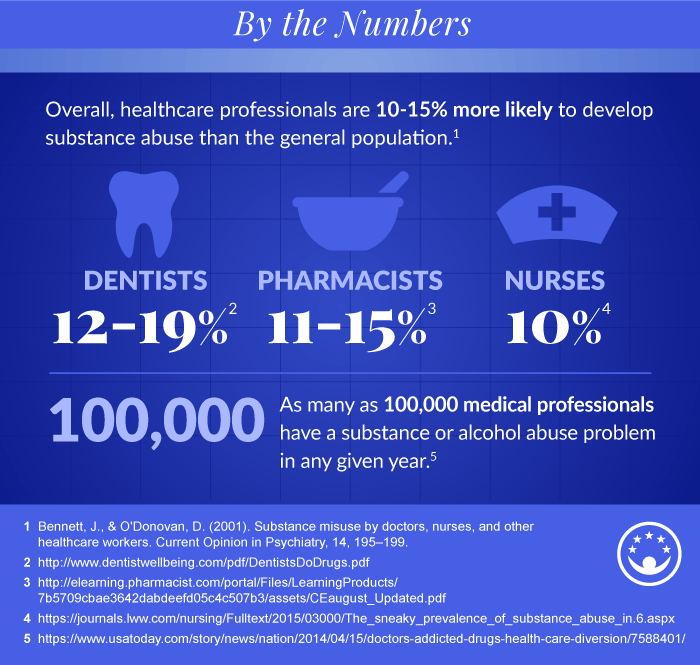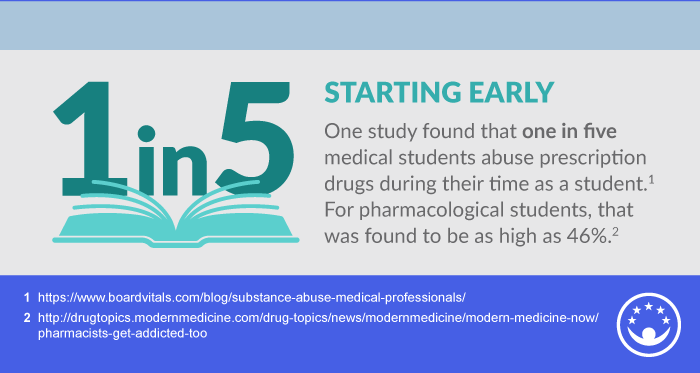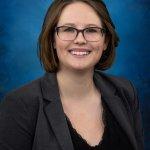Statistics for Substance Use in Medical Professionals
The issue of substance abuse in medical professionals has slightly lowered overall in the last decade or so, but still remains a problem year after year. Few careers have such odd working hours and so many traumatic situations as those in the healthcare industry.
The high levels of stress and physical pain that often come with this job open the door for numerous types of addiction.

Substance Use in Medical Professionals
The use of alcohol is a continuous source of addiction across the country, with about 7% of American adults being considered heavy drinkers. Though it’s a lower percentage than the overall average, the rate of medical personnel who struggle with this addiction is still concerning. About 4.4% of people working in healthcare have a problem with heavy alcohol consumption.¹
And even with the many treatment options available for these individuals, this rate has stayed around the same number for over ten years.¹
Prescription Drug Statistics
Another common form of substance use in medical professionals is the use of opioids, benzodiazepines (Xanax) and other prescription medications. Many healthcare workers turn to these drugs for stress relief, to deal with depression, pain symptoms, or to boost their overall work performance. But as time progresses, these seemingly harmless meds often become a source of dependence or addiction in the user.
Back in 2013, a localized study was conducted via a survey of 55 physicians regarding issues of substance use.² The research found that 69% of these doctors misused prescription drugs at least once during their career.³ And the reasons were related to high stress levels as well as emotional and physical pain relief.
In his book titled Free Refills, Dr. Peter Grinspoon wrote about how common opioid use is among doctors in particular. He estimated the rate of use among these medical workers “start at 10 percent and rise up to 15 percent.” His main reasoning for the growth rate is the easy access many physicians and nurses have to opioids like Fentanyl, Oxycodone, and others.

Illicit Drug Statistics
It’s hard to imagine anyone in the healthcare field taking any type of illegal substance, but approximately 5.5% of medical professionals struggle with illicit drug use. They often turn to things like marijuana as a means of relaxation after a long shift at the hospital, clinic, or other healthcare facilities.
Even William Stewart Halsted, a man recognized as the father of modern American surgery, was addicted to cocaine back in the twentieth century. And the problems have only grown from there.4
Treatment Options for Substance Use in Medical Professionals
The concerns that accompany these statistics of prescription medications use and alcohol addiction in the healthcare industry are felt by anyone who ever needs to get medical attention. The importance of medical personnel being fully aware of the current situation and their surroundings is imperative to their success.
But substance use in medical professionals has numerous options for treatment at local centers or in rehab facilities.

Get Help Today
If you or a loved one struggles with addiction, call an admissions navigator and start the admissions process today. They will listen to your story and help you explore levels of care offered by American Addiction Centers (AAC). You can also verify your insurance online.
